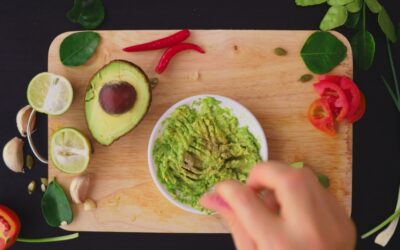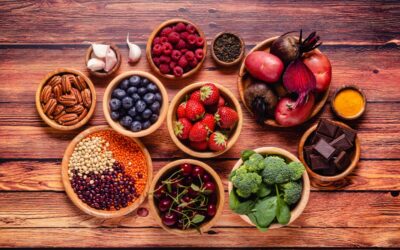Sprouting Goodness: A Step-by-Step Guide to Growing Broccoli Sprouts
Broccoli sprouts are miniature nutritional powerhouses that pack a punch of health benefits. Bursting with vitamins, minerals, and antioxidants, these tiny green sprouts are known to have 10-100 times more nutrients than their mature counterparts. Growing your own broccoli sprouts at home is a rewarding and cost-effective way to add a little spice to a salad or sandwich and boost your well-being. In this article, we will guide you through the simple steps of sprouting broccoli seeds, allowing you to enjoy a fresh and nutrient-dense addition to your meals.
Step 1: Gather the Materials to Grow Your Broccoli Sprouts
To get started, you will need a few basic supplies:
- Broccoli seeds: Look for organic, non-GMO broccoli seeds, which are easily available at health food stores or online.
- A wide-mouthed mason jar or sprouting tray: Choose a jar or tray that allows for adequate airflow and drainage. I personally prefer the jars as they take up less space on the counter and I have heard from others that the trays are hard to keep clean.
- Cheesecloth or mesh screen: This will help strain the water during rinsing while preventing the seeds from escaping.
- Water: Make sure you have a reliable source of clean water for rinsing the sprouts.
Step 2: Prepare the Seeds
Measure out approximately two tablespoons of broccoli seeds. Rinse them thoroughly under cool water to remove any debris or dust. Place the seeds in a clean jar or sprouting tray, ensuring there is enough space for the seeds to expand and grow.
Step 3: Soak the Seeds
Fill the jar or tray with water, covering the seeds entirely. Allow the seeds to soak for 8-12 hours, preferably overnight. Soaking the seeds initiates the germination process and softens the outer seed coat.

Step 4: Drain and Rinse
After the soaking period, drain the water from the jar or sprouting tray. Rinse the seeds under cool water and drain again. This step helps remove any residual compounds and encourages a clean growing environment for the sprouts.

Step 5: Begin the Sprouting Process
Place the rinsed seeds in the jar or sprouting tray and cover the top with a cheesecloth or mesh screen. This allows for proper airflow and prevents dust or insects from contaminating the sprouts. Position the jar or tray at an angle, allowing excess water to drain out and air to circulate.

Step 6: Rinse and Drain
Over the next few days, you will need to rinse the sprouts twice a day, ideally in the morning and evening. To do this, fill the jar or tray with water, swish it around gently, and drain off the excess water. Ensure that the sprouts have enough moisture without sitting in a pool of water, as this may lead to mold formation.

Step 7: Observe Growth
As you continue to rinse and drain the sprouts, you will notice tiny green shoots emerging from the seeds within a couple of days. Keep them in a well-ventilated area, away from direct sunlight. Ensure the sprouts are not overcrowded, as they need space to grow.

Step 8: Harvest
After approximately 5-7 days, your broccoli sprouts will be ready for harvest. At this stage, the sprouts should have developed two small leaves. Rinse them one final time to remove any hulls or loose seeds. Gently pat the sprouts dry with a clean paper towel or use a salad spinner.

Step 9: Removing “unsprouted” seeds
This step isn’t absolutely necessary, however, to avoid getting little brown seeds stuck in your teeth, I recommend removing them. Start by moving your seeds from the jar to a large bowl. Fill the bowl with room temperature clean water. Use your fingers to separate the staulks. The seeds will float to the top. Put your hand in the water and hold the staulks down. Tip the bowl to dump out the water with the seeds.


Step 10: Drying the Broccoli Sprouts
Place the clean staulks in a salad spinner to remove excess water


Step 11: Storage and Enjoyment
Once dry, transfer the sprouts to a clean, airtight container or a plastic bag with a few holes for air circulation. Store them in the refrigerator, where they will remain fresh for up to a week.

Disclosure: This post contains affiliate links.
The Unseen Connection: Oral Health’s Surprising Impact on Heart Health
Did you know that the benefits of maintaining oral health go beyond your mouth? Oral health—the health of your teeth, gums, alveolar bone, etc.—plays a more significant role than you think. Sure, it keeps your gums and teeth clean and healthy. It also helps with basic...
Whispers to Wonders: Unraveling the allure of ASMR
You may have come across the term “ASMR” at least once, particularly if you’ve been on certain corners of social media. Be it TikTok, Instagram, or even YouTube, ASMR videos have been all the rage. Tapping, scratching, whispering, chewing—ASMR (autonomous sensory...
Tea-rific Health Benefits of Drinking Green Tea
Around 600,000 tonnes of green tea is consumed annually — a figure that has grown by approximately 20% in the last ten years. When you understand all the benefits of drinking green tea, its popularity isn’t surprising at all. This grassy, flowery, and earthy...
The power of protein on weight management
Weight management can be a challenging journey for many individuals, but with the right approach, achieving a healthy and sustainable weight is possible. Among the various factors that influence weight loss success, the role of protein cannot be overstated. Protein is...
Avocados: The Superfood that is SUPER good for you
Move aside, apples, because there's a new health-conscious favorite in town that's ready to steal the spotlight. Enter avocados, the green wonders that can humbly boast about their irresistible taste and creamy texture. But even more so about their health benefits....
Is a meat diet healthy?
The impact of meat consumption on health is a complex and debated topic. The vegans will give a compelling argument that meat will kill you. And of course, the “carnivore” (person who primarily eats meat) will give a compelling argument that meat is the healthiest of...
Unveiling the Health Secrets Within: Understanding the Gut Microbiome
The human body is home to trillions of microorganisms, forming a complex ecosystem within our gastrointestinal tract (GIT) known as the gut microbiome. Long overshadowed by the spotlight on human cells, this intricate community of bacteria, viruses, fungi, and other...
Exploring the Connection Between Cortisol, Stress, and Overall Health
The “Longevity” game is not about living long, but living “well”. And the hidden player calling the shots might be cortisol, aka the stress hormone. As stress permeates our lives, its effects on our overall health become increasingly apparent. In this article we will...
Polyphenols: Health Benefits and Food Sources
I have long believed that a diet of fruits, vegetables, and seeds had a positive impact on overall health. A great example are studies looking at people who eat a Mediterranean diet (diet with a high concentration of fruits, vegetables and legumes). The reason might...
Antioxidants: A beginners guide to understanding these powerful chemicals
Cardiovascular disease and cancer are responsible for 44% of deaths in the US. 6.2 million Americans are living with Alzheimer’s disease and nearly 1 million with Parkinson’s disease. All of these diseases have one thing in common, oxidative stress. But there is...











